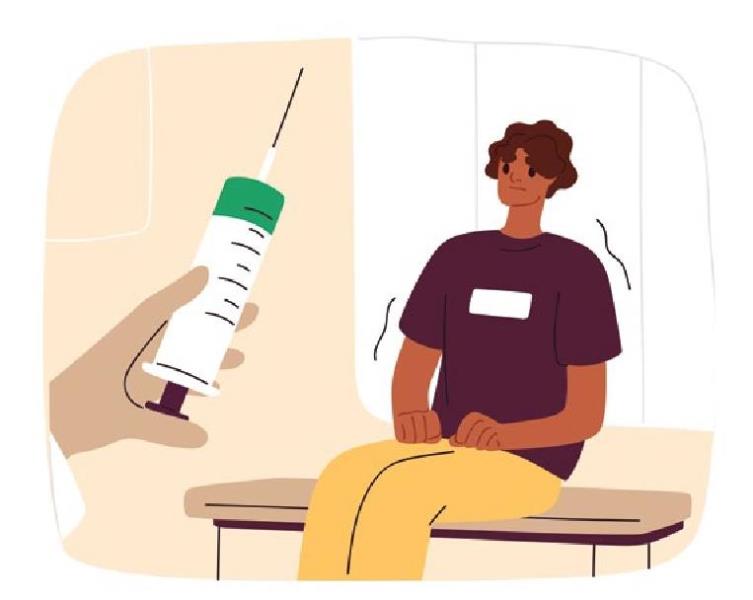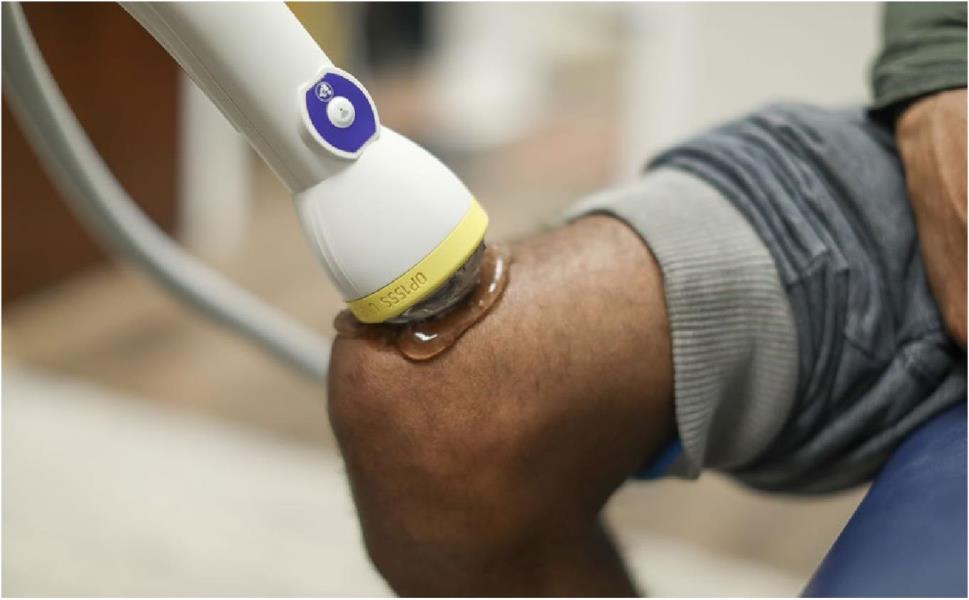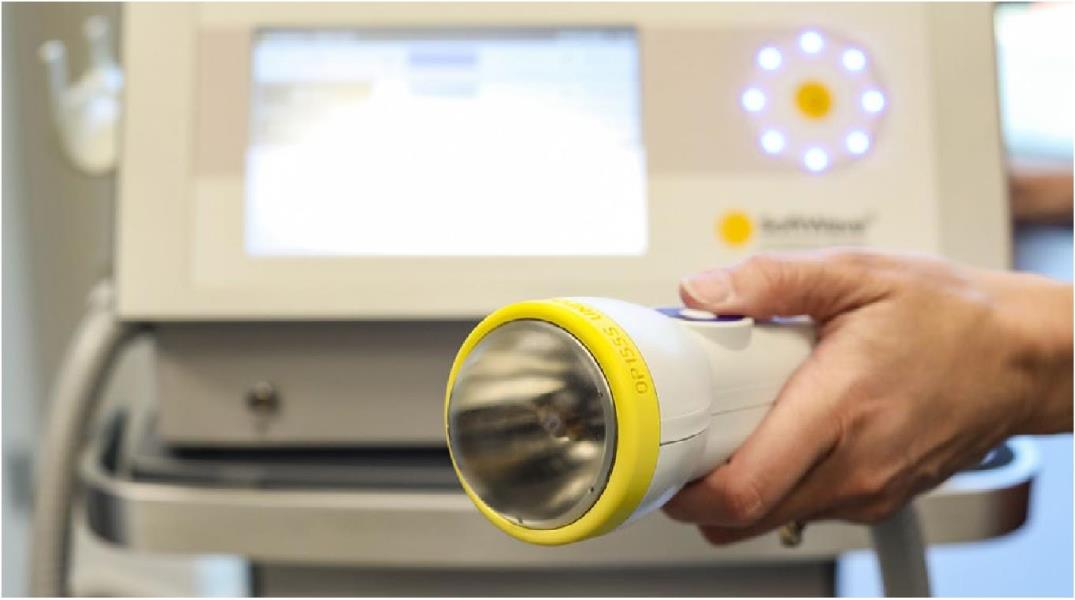Meeting Patient Demands: The Solution They Are Seeking
By Kyle Bowers, DC

In the ever-evolving landscape of chiropractic care, practitioners constantly seek innovative solutions to enhance patient outcomes and satisfaction. The key to longevity in this competitive healthcare market lies in adapting to patient needs, which emphasizes the efficacy, comfort, and safety of treatments. With the advent of shockwave technology, chiropractors are equipped to meet these demands, offering a noninvasive, effective treatment that respects the patient’s desire for a pain-free experience.
The Impact of Needle Phobia and Treatment Discomfort
A recent CDC study highlighted a staggering reality: one in four Americans suffers from needle phobia,1 which can lead to increased procedural pain and a reluctance to seek necessary care. Coupled with growing skepticism toward cortisone injections and their side effects,3 there’s an unmistakable shift toward safer, more comfortable alternatives. There’s even a phobia called iatrophobia, which is the fear of doctors.2 This group may avoid seeking medical care when they are sick because of extreme anxiety or panic attacks. Such facts underline the critical need for noninvasive treatment modalities that can quiet fears and encourage ongoing patient engagement.
Advantages of Shockwave Technology
There is patented technology available, serving as a beacon of progress. For example, certain electrohydraulic shockwave technology offers advantages that include:
Noninvasive approach: By eliminating needles, shockwave ensures a fear-free and anxiety-free treatment, welcoming even the most apprehensive patients.
No downtime required: Patients appreciate the convenience of returning to their daily activities immediately after treatment.
Safety profile: Shockwave stands out as a safer alternative for care because it is free from the potential side effects associated with cortisone injections and other invasive procedures.
Exploring the Science Behind Shockwave Technology
To better understand the impact of shockwave technology, it’s imperative to dive into the science that powers it. For electrohydraulic, the technology operates on the principle of electrohydraulic shockwaves, which are high-energy acoustic waves. These waves stimulate the body’s natural healing processes by enhancing blood circulation, modulating inflammation, and promoting cell regeneration in the treated area. The result is faster recovery from injuries and a reduction in chronic pain, offering patients a nonpharmacological, nonsurgical option to address their musculoskeletal issues.
Addressing Common Concerns
Patients and practitioners may have questions about the introduction of new technology into traditional chiropractic care. Addressing these concerns will inform and reassure them.
Will the treatment hurt? The application of shockwaves ranges from tolerable to painless, with most patients experiencing a sensation when energy reaches the injured area. *applicator photo w caption could go here
How many treatments are needed? The number of sessions varies depending on the condition being treated, but many patients report relief after just a few treatments.
Is it safe for all patients? While shockwave therapy is widely applicable, it’s important to consult with a healthcare provider to discuss individual health considerations.
 Some shockwave devices have a flexible membrane, which makes for a more comfortable experience because the soft head easily conforms to the body.
Some shockwave devices have a flexible membrane, which makes for a more comfortable experience because the soft head easily conforms to the body.
A Provocative Look Forward
As we stand on the cusp of what could be a paradigm shift in chiropractic care, it’s worth posing some provocative questions to the field:
What if we could guarantee a pain-free treatment experience? Imagine the implications for patient satisfaction and practice growth.
Could shockwave technology render certain invasive procedures obsolete? As noninvasive treatments become more effective, we must consider their potential to replace more traditional, invasive options.
How will patient expectations shape the future of chiropractic technology? With patients increasingly seeking treatments that align with their lifestyles, preferences, and fears, providers must adapt or risk extinction.

Why Comfort in Treatment Matters
Comfort in chiropractic treatment is not merely a luxury — it’s a necessity for patient retention and satisfaction. When patients are at ease, they’re more likely to complete their treatment plans and become advocates for their chiropractors, sharing their positive experiences with others. Shockwave technology enhances the patient’s experience and contributes to the practice’s reputation for compassionate care.
A Call to Action for Chiropractors
Incorporating shockwave technology into your practice is more than an upgrade to your therapeutic arsenal — it’s a commitment to patient-centric care. By offering treatments that patients look forward to rather than fear, chiropractors can see improved outcomes, increased patient loyalty, and a thriving practice.
The Bigger Picture: A Holistic Approach to Care
Shockwave therapy fits into a larger trend toward a more holistic approach in health care, where the goal is not just to treat symptoms but also to enhance overall well-being. By integrating such technology, chiropractors can offer a comprehensive care model that aligns with contemporary healthcare philosophies, emphasizing whole-person health and preventive care.
“As we continue to prioritize the needs and well-being of our patients, technologies like an OrthoGold shockwave device are not just innovative — they’re essential. You can actually see that patients are less anxious. It’s a win-win for everyone,” said Kyle Bowers, DC, of Bowers Chiropractic.
References
Centers for Disease Control and Prevention, National Center for Injury Prevention and Control [Internet]. c2023 [cited 2024 Mar]. Available from: https://www.cdc.gov/childrensmentalhealth/features/needle-fears-and-phobia.html#:~:text=Estimates%20show%20that%20as%20many,vaccine%20due%20to%20these%20fears.
Cleveland Clinic [Internet]. c2021[cited 2024 Mar]. Available from: https://my.clevelandclinic.org/health/diseases/22191-iatrophobia-fear-of-doctors
Konstantakos E. Cortisone injection risks and side effects. Arthritis-Health. 2020 June [cited 2024 March]. Available from: https://www.arthritis-health.com/treatment/injections/cortisone-injection-risks-and-side-effects
About the Author
Kyle Bowers, DC, owns Bowers Chiropractic located in Columbia, Missouri, and is the team chiropractor for the University of Missouri. He specializes in pain management and auto injury. His comprehensive clinic provides shockwave therapy, massage, spinal decompression, weight loss programs, and has an esthetician on staff. Learn more at www.bowerschirocolumbia.com. Contact him at [email protected] or 573-289-0042.
Caption for applicator photo:
Some shockwave devices have a flexible membrane, which makes for a more comfortable experience because the soft head easily conforms to the body.
 View Full Issue
View Full Issue









